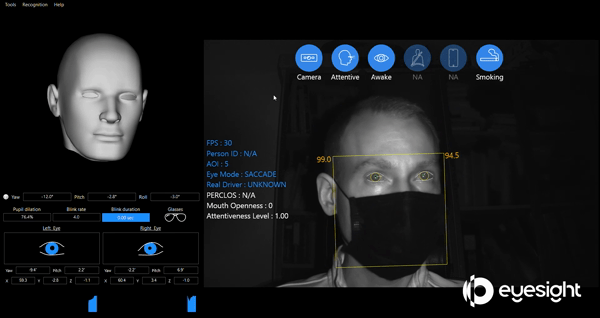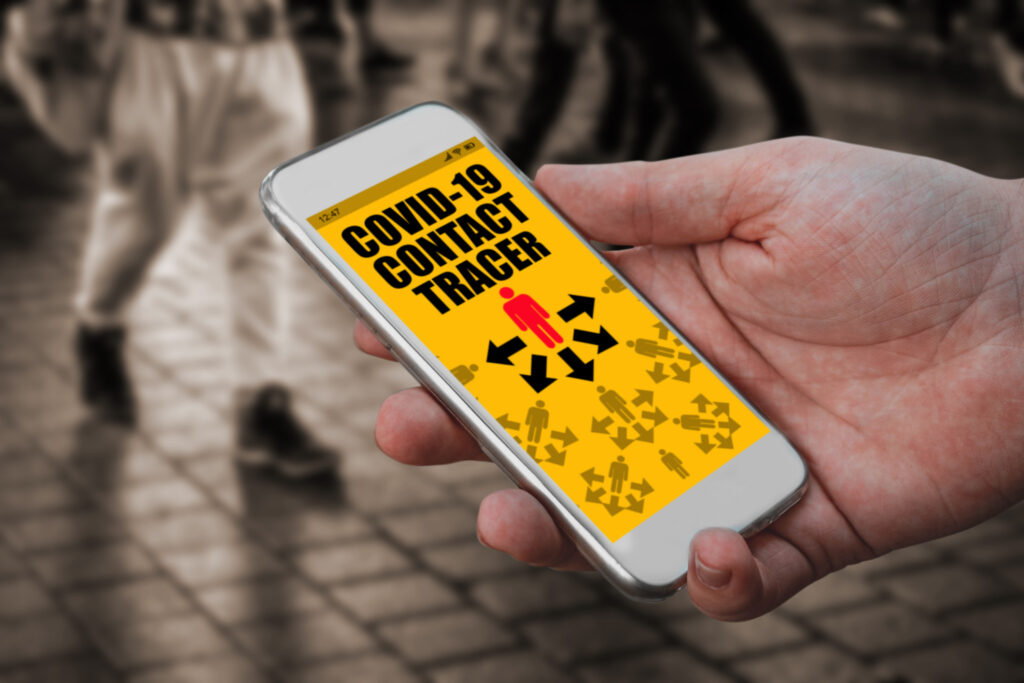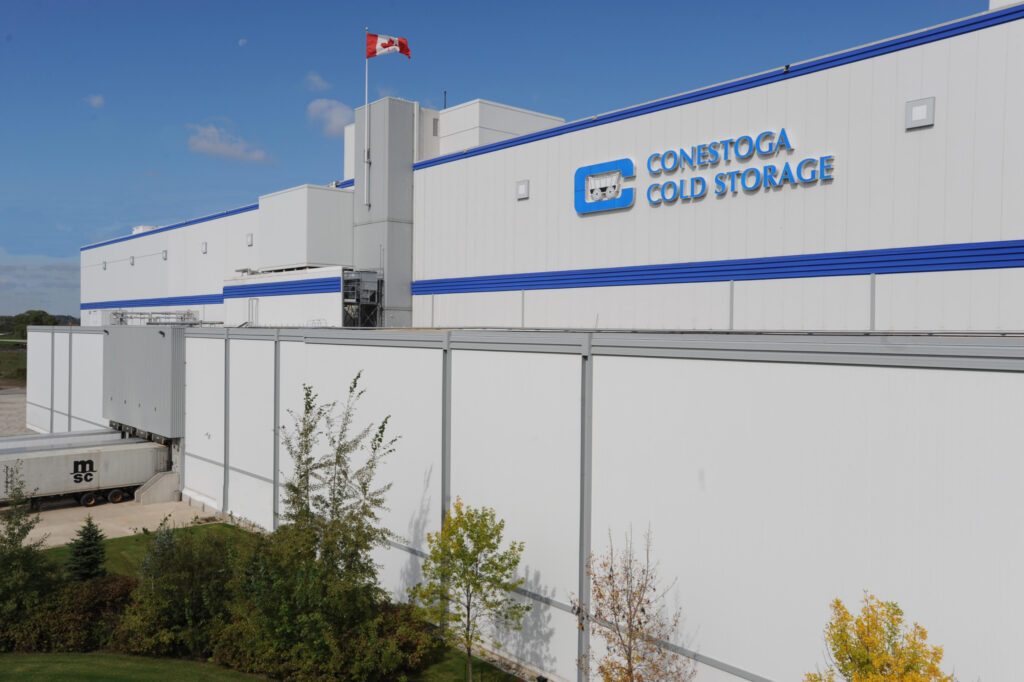Trucking technology put to work in Covid-19 fight
TORONTO, Ont. — Necessity is said to be the mother of invention. In that spirit, several trucking-focused technical innovations are already being updated and repurposed because of Covid-19. Here are five examples:
1. Truck telematics benchmarking the ‘new normal’
The ability to track vehicle positions is not exactly new, but the underlying telematics data is offering insights into the way the supply chain is responding to the economic realities of a pandemic.
Geotab, inspired by Johns Hopkins’ Coronavirus Resource Center, has developed a Commercial Transportation Recovery Dashboard that shows how trucking activity has begun to recover in recent weeks.
The collected data offers a benchmark that shippers and carriers can use to see how their business experience compares to macroeconomic trends, says Mike Branch, Geotab’s vice-president – data and analytics.

It’s about answering a pressing question: “What is the new normal?”
The answers to that question continues to evolve. Since hitting rock bottom during Easter Weekend, Canada’s trucking activity has been recovering more quickly that the U.S. and Mexico, Branch says. Some sectors are also recovering more quickly than others. Construction, for example, was one of the first to show an uptick in activity.
He expects the ongoing recovery to elevate the importance of data for fleet managers. Measurements such as equipment utilization rates could help to inform decisions about whether to sell off certain vehicles or shift assets to other uses.
Comparing internal telematics data to the broader benchmarks could require some fleets to adopt a different approach, though.
“Some of these companies haven’t invested in telematics, or haven’t been using it to the extent it could be,” Branch says. “Our fleet data [often] gets stuck in fleets.”

2. Driver-facing cameras detecting face masks
Masks have been identified as one of the tools to help limit the spread of Covid-19. Depending on the jurisdiction, drivers have no choice but to wear such personal protective equipment. The masks are mandated everywhere from specific customer facilities to border crossings.
Eyesight Technologies has updated its driver monitoring system to detect the use of such facemasks – adding to features that detect whether drivers are holding cigarettes or cellphones when they should have hands on the wheel, or track eye and head motion to detect drowsy or distracted driving.
“It started even before [the Covid-19] outbreak because we serve also the Asian market,” says Eyesight Technologies’ vice-president – product Tal Krzypow, referring to work on the mask-detecting features.
“There is really a plethora of possibilities.”
– Tal Krzypow, Eyesight Technologies
There are admittedly some challenges that emerge. When identifying that a driver is wearing a mask, the mask itself can block a system’s facial recognition capabilities. It’s a matter of prioritizing needs.
Camera-based driver monitoring systems may be closer to reality than some North American truck drivers believe. The European Union has identified an array of new safety technologies that will become mandatory as of 2022, Krzypow says as an example. Cars, vans, trucks and buses will need to come with features that warn about driver drowsiness and distraction, along with data recorders that serve as a black box after an accident.
“There is really a plethora of possibilities,” he adds, referring to the way camera-based systems could potentially track driver mood or onset of a sudden sickness.

3. Tracking driver activity for contract tracing
When cases of Covid-19 are identified, public health officials immediately set out to identify anyone who may have been exposed to the virus.
Hensall District Cooperative’s fleet managers are prepared to use existing tracking data to get a head start on any contact tracing, even before test results are confirmed.
“Everyone has to communicate so we don’t miss a step,” said driver and vehicle safety manager Jed Haines, during a recent webinar on digital tools adopted by the fleet. “We believe there is only so much the local health authorities and so on can do because everyone forgets a little portion of their day.”
“Testing and contact tracing are going to be critical to fending off a second wave,” added Fleetmetrica CEO Ward Warkentin.
Concepts explored for the general public have included things like cellphone apps that would use Bluetooth signals to detect if you had come close to someone who later reports a case of Covid-19.
“Trucking is in an excellent position to use your onboard recorders, or ELDs, or telematics,” Warkentin said.
The added advantage is that the fleet data is already collected independently of personal details about a truck driver or a reported illness, so there’s no potential for a privacy breach, he said.

4. Geofencing to support social distancing
Geofencing is often used to tell when trucks arrive at a particular location, helping to refine estimated arrival times, and even steer drivers to particular dock doors when they are finally clear.
Researchers at Conestoga College in Kitchener, Ontario are working with Conestoga Cold Storage to develop a mobile app that will use geofencing to help maintain physical distancing measures.
“By using GPS or cellular data, the system can track drivers to understand when their trucks are within the appropriate range, then issue door assignments to drivers through a mobile check-in process, eliminating the need for them to enter the building,” said researcher Russell Foubert.
The team had actually been working on the project since January 2020, although the pandemic created a new sense of urgency for the prototype.
“If we can eliminate the need for truck drivers to park in our yards and enter our offices to do paperwork, we can reduce the risk to workers while also making our operations more efficient,” said Gavin Sargeant, vice-president of Conestoga Cold Storage.
5. A checklist to develop a Covid-19 safety plan
Work Safe BC has unveiled a mobile app to help businesses develop a Covid-19 Safety Plan, guiding users through a six-step process to outline policies, guidelines and procedures to keep workers healthy and safe.
Steps involve assessing the risks at your workplace, implementing protocols to reduce the risks, developing policies to manage the workplace, developing communication plans and training, monitoring the workplace and updating plans as necessary, and assessing and addressing the risks from resuming operations.
The app is available for iOS and Android, while the Covid-19 Safety Plan is also available as a fillable PDF that can be downloaded and saved with workplace details.
Have your say
This is a moderated forum. Comments will no longer be published unless they are accompanied by a first and last name and a verifiable email address. (Today's Trucking will not publish or share the email address.) Profane language and content deemed to be libelous, racist, or threatening in nature will not be published under any circumstances.